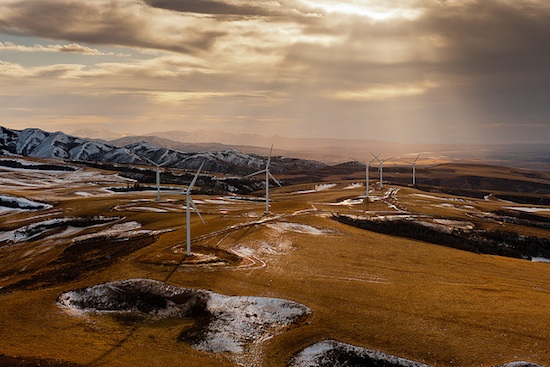June 15 is Global Wind Energy Day. As Colorado is a world leader in wind energy production, it is not only fitting to tout our success, but to encourage its further production.
Colorado’s installed capacity of 1,530 turbines produces 2,332 megawatts of electricity, or 13.8 percent of the state’s electricity, and powers the equivalent of more than 870,000 average Colorado homes. But according to the American Wind Energy Association, the state has the 13th best wind resource in the nation, and this wind power has the potential of meeting more than 24 times the state’s current electricity needs.
With 19 manufacturing facilities, Colorado’s wind industry provides employment for about 5,000 workers. This is set to increase when NextEra Energy Resources completes its wind farm 28 miles east of Colorado Springs. That facility is scheduled to come on line by late 2015.
What’s holding Colorado back from developing this renewable energy resource to its full potential? At least two things: the untruth that only renewables are subsidized; and that damages incurred to the natural environment in energy production are borne by society — not the energy producers and its consumers.
The Production Tax Credit for wind farms expired at the end of 2013, and Colorado Sens. Mark Udall and Michael Bennet are asking for a 10-year extension of the program. A bill that would have provided about $13 billion for wind energy stalled in the Senate on May 15, amid cries of “corporate welfare” from its opponents.
Nick Loris with the conservative Heritage Foundation told the Washington Free Beacon that “taxpayers shouldn’t be footing the bill to help it [wind energy] remain economically viable.” He said the subsidy is equal to “shifting labor and capital around to ‘politically preferred sectors of the economy.’ ”
However, the Free Beacon avoided anymention of the $4 billion in annual tax breaks — otherwise known as subsidies — to the fossil fuel industry. Nor did it include reports on the cumulative dollar amounts, over the lifetimes of their respective subsidies, at about $630 billion in the U.S. for oil, coal, gas and nuclear industries, while the renewable energy sector (wind, solar and biofuels) received roughly $70 billion.
In other words, let’s end that $4 billion in annual subsidies for the fossil fuel sector. After all, if the sector’s viable, it can stand alone.
However, Bloomberg New Energy Finance reports that even without the subsidy, the cost of wind energy has declined by 42 percent over the past four years as technology has improved.
Our society doesn’t put a price on our water supplies or our clean air. Nuclear and fossil fuel producers pollute and consume these resources to nonsustainable levels, and then these damages are externalized and borne by society at large.
Thermoelectric power plants fueled by coal, natural gas, oil and nuclear fission all boil water to produce steam, which then turns a turbine that generates the electricity. This water comes from our streams, lakes and rivers, with the power plants also drawing in and killing millions of fish per year. After the water passes through the turbine, more water is needed to cool the steam back into water for reuse. Nationwide, electricity production is the largest user of water.
Coloradans deserve an honest discussion of the state’s wind power potential as well as its benefits to society and to our natural environment. Let’s not be hijacked by those with vested interests in the fossil fuel industry.
Mary Coday Edwards is a former newspaper editor and member of the 2014 Colorado Voices panel.

